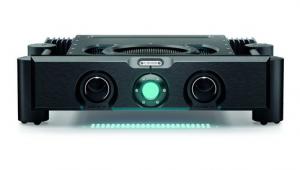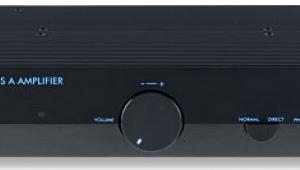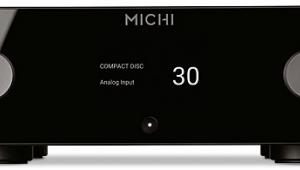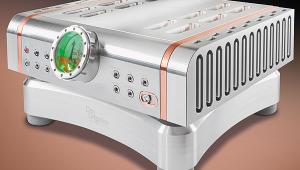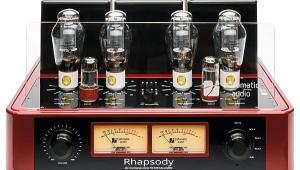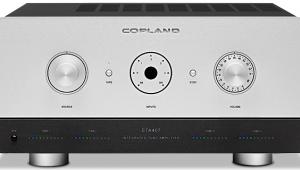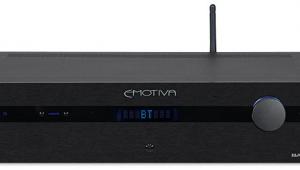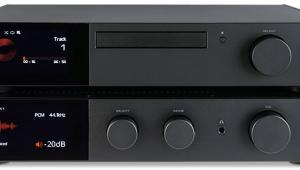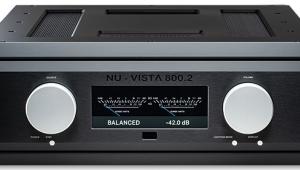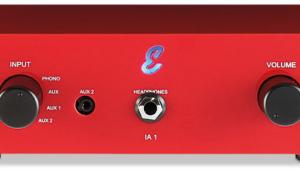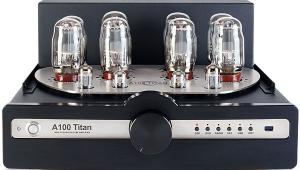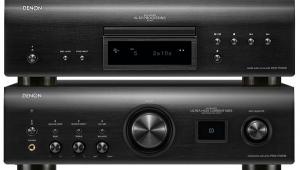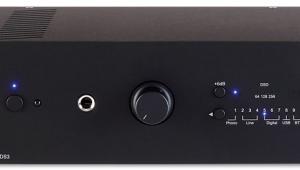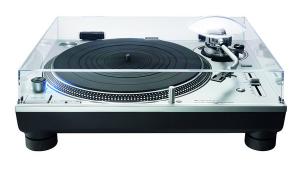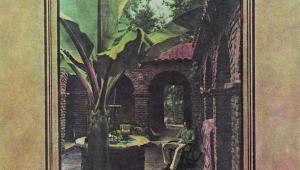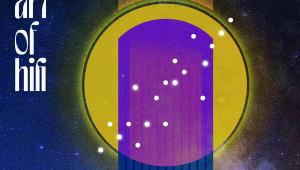Audiolab 9000CDT/9000A CD Transport/Amplifier Lab Reports
Audiolab 9000CDT/9000A (DAC)
Tested via the 9000A's DAC/preamp output – a maximum 2.06V from a 116ohm source impedance – the partnering 9000CDT transport achieves a wide 109.1dB A-wtd S/N ratio via CD, a figure not bettered even with direct 24-bit inputs to the amplifier. The latter offers a choice of five digital filters although these are only enabled when the 'upsampling' option is switched off. With 'upsampling' on, the 9000A defaults to a gentle minimum phase filter offering a –0.3dB/20kHz, –9.3dB/45kHz and –4.5dB/90kHz roll-off with CD, 96kHz and 192kHz inputs, respectively. Jitter is fabulously low at ~8psec with 24-bit inputs (and limited to 118psec by the 16-bit data pattern used with CD) regardless of whether 'upsampling' is engaged or not [see Graph 2, below]. The five digital filters include fast and slow roll-off linear and minimum phase types plus a hybrid option, these offering responses of –0.0dB, –3.4dB, +0.0dB, –5.0dB and –13dB (all re. 20kHz with CD inputs) traded against stopband rejections of 112dB, 16dB, 93dB, 21dB and 98dB, respectively.
Low-level resolution is true to ±0.8dB and ±0.1dB over a 100dBFs range with CD and 24-bit inputs, respectively, and while distortion settles out at 0.0003% at peak level (re. 1kHz) it falls to a lower 0.0001% at –10dBFs with 24-bit inputs [see Graph 1]. Incidentally, peak level digital inputs cause a digital clip of ~0.5% at 20kHz (falling back to 0.0008%/–10dBFs) when 'upsampling' is engaged, though this is highly unlikely to occur with typical music data. Otherwise, the 9000A's post-DAC analogue stage offers a good 115-95dB stereo separation and 0.01dB channel balance (all re. 20Hz-20kHz). The ability to select pre/power/integrated outputs from the front panel is a real bonus. PM
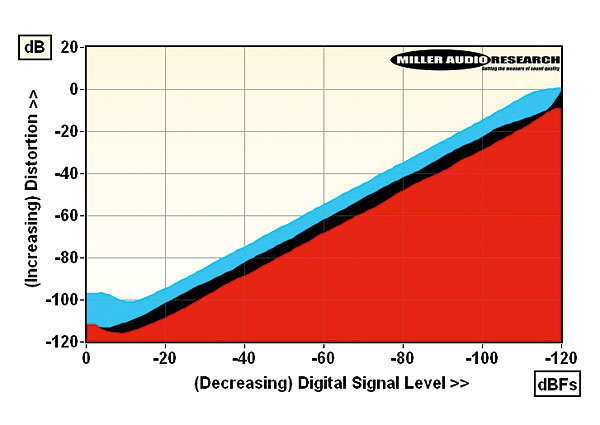
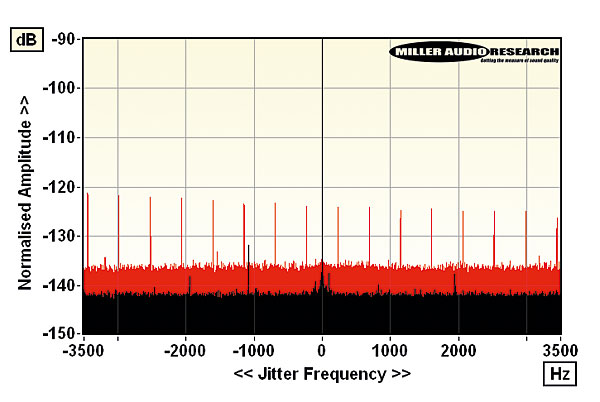
| Maximum output level / Impedance | 2.06Vrms / 116ohm (Preamp) |
| A-wtd S/N ratio (CD / LPCM) | 109.1dB / 109.1dB |
| Distortion (1kHz, 0dBFs/–30dBFs) | 0.0003% / 0.0007% |
| Distortion & Noise (20kHz, 0dBFs/–30dBFs) | 0.0019% / 0.0007% |
| Freq. resp. (20Hz-20kHz/45kHz/90kHz) | +0.0 to –0.3dB/–9.3dB/–4.5dB |
| Digital jitter (CD / 48kHz LPCM) | 118psec / 8psec |
| Resolution (re. –90dBFs/–100dBFs) | ±0.1dB / ±0.1dB |
| Power consumption | 10W (1W standby) |
| Dimensions (WHD) / Weight (9000CDT) | 444x89x342mm / 5.7kg |
Audiolab 9000A
The 9000A features an input trim that allows the overall gain to be adjusted from a default +23.1dB (via the balanced XLRs) down to +17.1dB (–6dB trim) and up to +29.1dB (+6dB trim). While +23dB is somewhat shy of the 'standard' +40dB gain typically offered, in practice it's perfectly judged for the 2V line output of contemporary sources – this yielding the 9000A's rated 100W/8ohm output. In practice the 9000A achieves slightly more, delivering 2x112W/8ohm and 2x185W/4ohm with sufficient headroom to accommodate peaks of 142W/8ohm and 265W/4ohm under dynamic conditions. Protection imposes a current limit of 12.3A so the dynamic output into lower 2 and 1ohm loads is 297W and 152W, respectively [see Graph 1, below], this being sufficient for most likely partnering loudspeakers of 88dB+ sensitivity and 6-8ohm nominal impedance. Talking of which, the 9000A's output impedance is a fairly flat ~0.03ohm from 20Hz-5kHz after which it picks up to 0.085ohm/20kHz and 0.67ohm/100kHz. So the response is a wide –0.17dB/20kHz and –1.8dB/100kHz into 8ohm but droops slightly to –0.4dB/20kHz and –3.6dB/100kHz into a lower 2ohm.
Distortion and noise are both very low, the former almost unaffected by power output (though it does increase with decreasing load impedance) from 0.0004-0.0006%/1kHz over a full 1-100W/8ohm range. The low noise helps maintain a very wide 92dB A-wtd S/N ratio (re. 0dBW) while distortion settles out at 0.00045-0.012% (re. 1-10W from 20Hz-20kHz), increasing only slightly to 0.023%/20kHz at a full 70W/8ohm [see Graph 2, below]. Capacitive coupling between channels is low and the stereo separation excellent at 83-100dB (20Hz-20kHz). PM
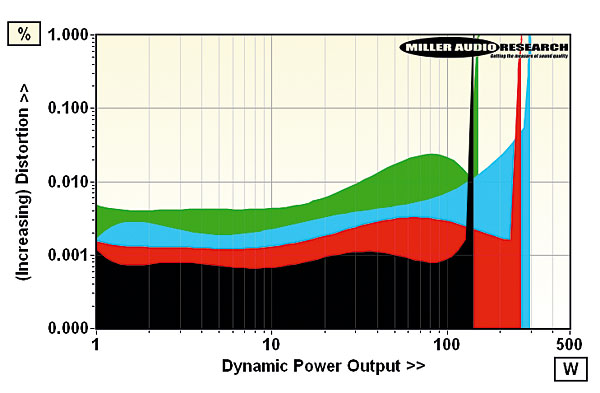
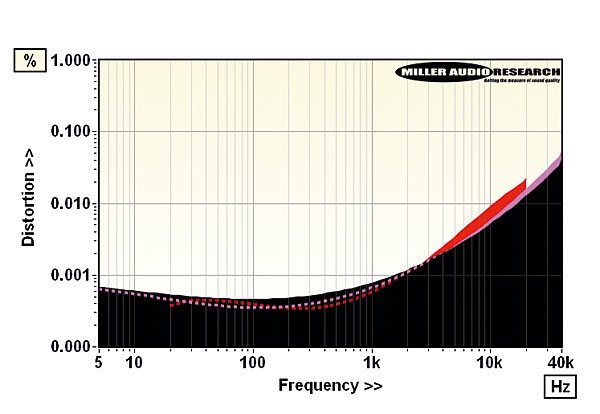
| Power output (<1% THD, 8/4ohm) | 112W / 185W |
| Dynamic power (<1% THD, 8/4/2/1ohm) | 142W / 265W / 297W / 152W |
| Output imp. (20Hz–20kHz/100kHz) | 0.029–0.085ohm / 0.67ohm |
| Freq. resp. (20Hz–20kHz/100kHz) | +0.0dB to –0.17dB/–1.8dB |
| Input sensitivity (for 0dBW/100W) | 197mV / 2000mV |
| A-wtd S/N ratio (re. 0dBW/100W) | 91.9dB / 111.9dB |
| Distortion (20Hz-20kHz, 10W/8ohm) | 0.00045–0.016% |
| Power consumption (Idle/Rated o/p) | 29W / 325W (1W standby) |
| Dimensions (WHD) / Weight (9000A) | 444x89x342mm / 9.4kg |
| Prices | £999/£1999 (CD transport/amplifier) |
